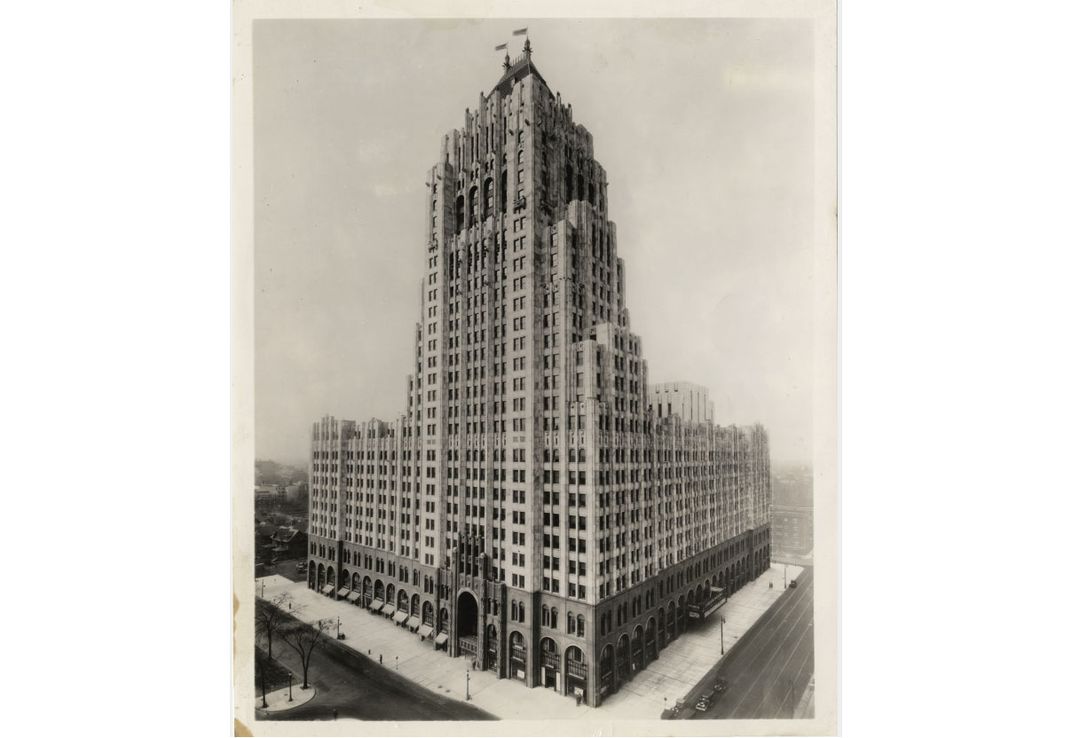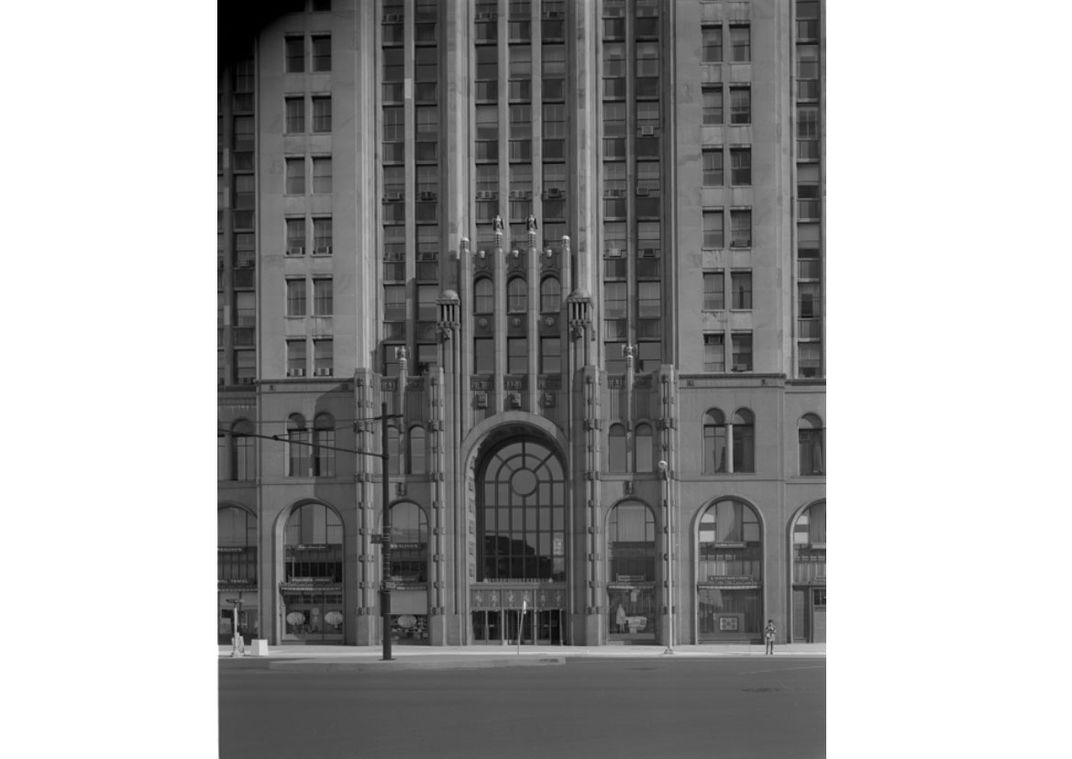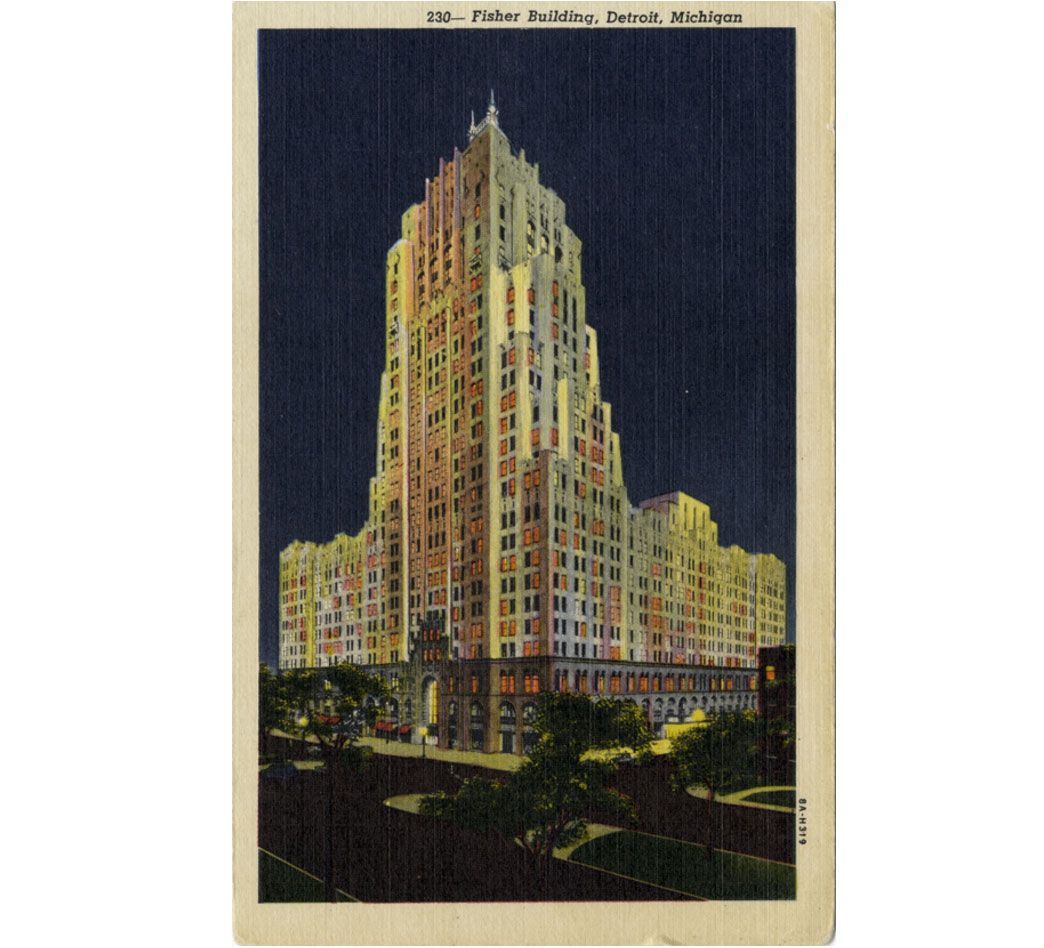This Art Deco Office Tower Was the Master Work of ‘The Architect of Detroit’
Although Kahn designed numerous buildings and factories, this is the one that’s come to define his work
/https://tf-cmsv2-smithsonianmag-media.s3.amazonaws.com/filer/9d/2d/9d2dc2dc-6f2f-4e04-87a3-ba5ce63140d5/fisher-at-night.jpg)
Albert Kahn, born on this day in 1859, has been called “the Architect of Detroit.”
Working between 1884 and 1942, Kahn designed between 400 and 900 buildings in Detroit, according to Michigan Radio: a truly crazy number. He’s best-known in industrial design circles for innovating industrial architecture used reinforced concrete, according to Historic Detroit. But to everyday visitors to Detroit, perhaps the most visible artifact of his life’s work is the Fisher Building.
Like much of Kahn’s work and much of historic Detroit in general, the Fisher Building was built for a company involved with auto production. The seven Fisher brothers who had owned the company commissioned the 441-foot skyscraper, which opened in 1938, as a home for Fisher & Co., according to the Michigan government’s historic places registry. After selling their company to GM in the 1920s, the brothers invested in oil, technology, banking and real estate.
But they also used their money to improve the city, writes Historic Detroit.”They gave millions to countless charities, civic causes, churches, educational institutions, and to making Detroit one of the finest cities in the world,” the heritage association says.
And what’s the finest city without the finest building? The wealthy Fishers “chose the best materials, the best location and the best architect, Albert Kahn, who, in turn, engaged the most talented sculptors, modelers, decorators and craftsmen and collaborators,” the registry reads.
The building is a big departure from the reinforced concrete structures Kahn is known for. It’s made out of granite and marble with intricate carvings and an ornate interior including frescos from a leading Hungarian artist. The Fishers’ offices, near the top, were decorated by a top firm and the outer office was nicknamed “the most exclusive club in the world.”
The roof was originally gold, although that was covered during WWII because of fears that the color would attract bombers (they never came) and couldn’t be restored after the war. Still, the tower remains “one of the most recognizable sights in Detroit’s skyline,” according to Historic Detroit.
The result of all this money and labor is a building that’s sometimes called Detroit’s largest art object. The world it was built for no longer exists, and it’s a monument to bygone times and styles and dreams. It still houses a theater and a number of offices, including those of the Detroit public school district and the Girl Scouts of Southeastern Michigan. At 30 stories tall, by today’s standards it’s not even very big.
Still, it is a dream. And after all, isn’t that what art is for?


